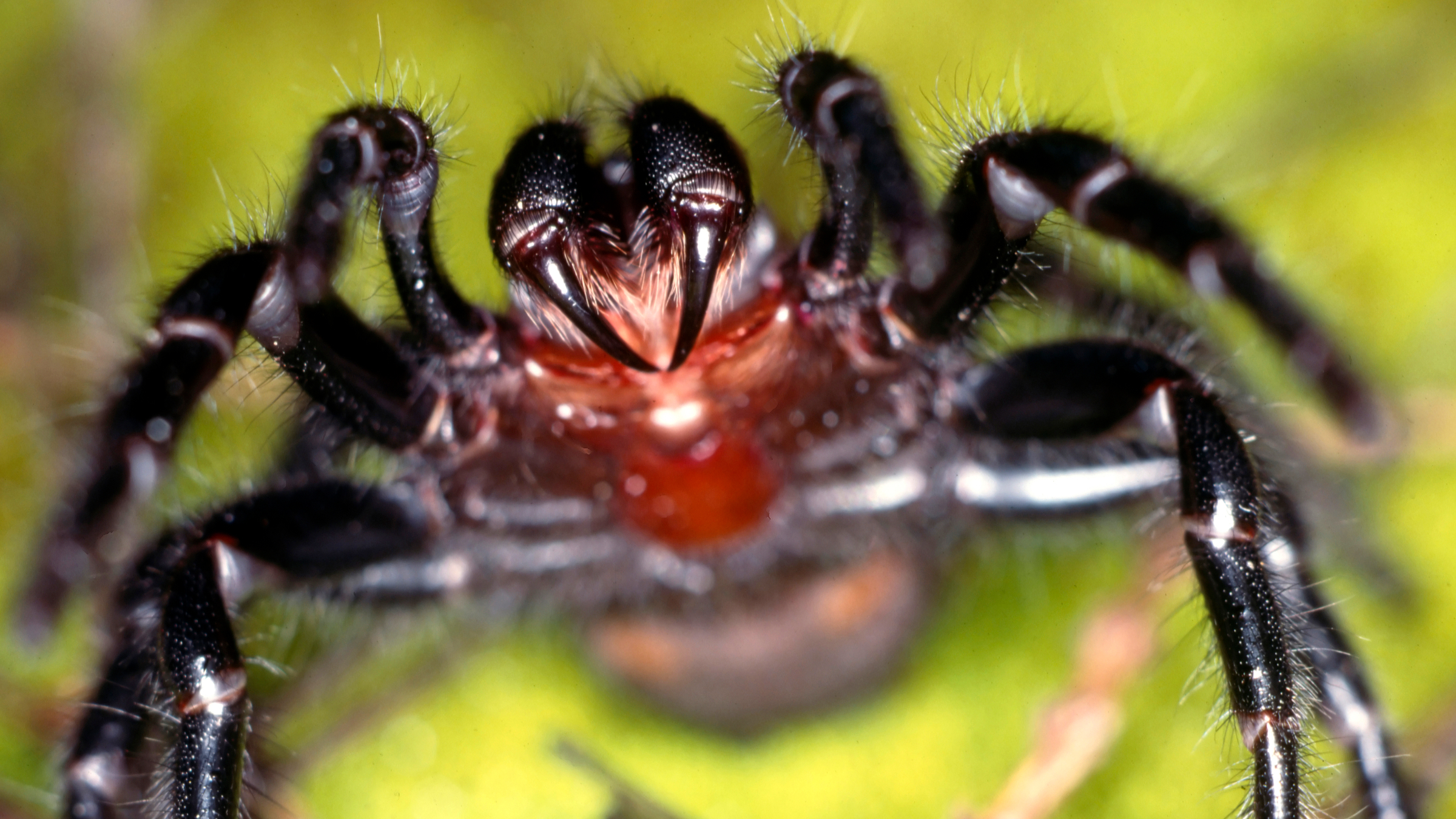Deadly spiders that can kill in minutes and survive underwater are hiding out in swimming pools
Heavy rain in Australia has led to an influx in venomous spiders being washed into people's swimming pools. Species found include funnel-web spiders, the venom of which is so toxic it can kill a child in just 15 minutes.

Deadly spiders that can survive underwater for over 24 hours are turning up in people's swimming pools in Australia after parts of the country were hit by heavy rain and floods over the past week.
These swimming pool interlopers include funnel-web spiders, which are members of the Araneida family, with around 40 known species. The Sydney funnel-web spider (Atrax robustus) is one of the most deadly spider species, with males being responsible for most fatalities, likely because it evolved more potent venom to protect itself while wandering around looking for females to mate with. While no deaths have been recorded since antivenom became available in the 1980s, if untreated a bite can kill a child in as little as 15 minutes.
Heavy rain and thunderstorms have hit parts of New South Wales since March 23, with a severe weather warning still in place for northern parts of the state. Sam Herrmann, a reptile keeper from Australian Reptile Park, told 9news that the rain has set funnel-web spiders "on the move."
"They're often seeking shelter, so the lip under the pool creates a great environment for them to hide and stay dry," he said. "However, sometimes they can accidentally fall into the pool."
Related: 11 deadliest spiders
Dan Smith, from the southern Sydney suburb Engadine, spotted one of these deadly spiders in his pool in the same spot he had found a trapdoor spider just a few days earlier.
"It was quite an awakening event," he told 9news. "It was very active, very fiery."
Sign up for the Live Science daily newsletter now
Get the world’s most fascinating discoveries delivered straight to your inbox.
Vasilios Basil Haddad, from Sydney, also found a "nasty" male funnel-web spider in his empty pool and posted a video of it to Facebook.
Meanwhile Lynda Smith, who lives on the northern New South Wales coast, found four eastern mouse spiders (Missulena bradleyi) in her pool. This species is similar in appearance to funnel-web spiders, with bulbous heads, powerful jaws and a venom of similar potency to their better-known counterparts. According to 7NEWS, she posted a warning about the presence of spiders to Facebook. "Please always check your pools before jumping in especially after rain," she wrote, adding they are "not to be messed with."
Funnel-web and mouse spiders are able to survive underwater by trapping an air bubble to the hairs on their underside, Helen Smith, the arachnology collection manager at the Australian Museum, told 7NEWS. She said spiders breathe differently than humans do, so it takes them much longer to drown. Most spiders have a dual respiratory system made up of a trachea and an organ called a book lung, which consist of a series of plates stacked up that allow for the diffusion of oxygen. The trachea carries oxygen to the tissues, while book lungs oxygenate hemolymph — the spider equivalent of blood.
"They can survive for several hours and sometimes a thoroughly dead-looking spider can suddenly twitch or come back to life slowly," she said, adding they can also bite underwater. "But to bite they need to grip onto something — so don't poke them."
Smith captured the funnel-web spider in his pool and contacted expert Scott Johnson, who offered to take it to the Australian Reptile Park, which has the facilities to milk it to make antivenom.
Herrmann told 9news that if people find spiders in their pools, they should scoop them out with a net. "If you so happen to get bitten, seek medical attention immediately," he said.

Hannah Osborne is the planet Earth and animals editor at Live Science. Prior to Live Science, she worked for several years at Newsweek as the science editor. Before this she was science editor at International Business Times U.K. Hannah holds a master's in journalism from Goldsmith's, University of London.










